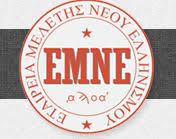Costas Gaganakis, Processions as liturgical dramas in Paris under theCatholic League, 1585-1594In his seminal work Les Guerriers de Dieu, Denis Crouzei has questionnedthe socio-political approach to the Catholic League, proposed by otherhistorians of the French Wars of Religion, by ascribing the emergenceof the «Holy Union of Catholics» to a mental climate of acute eschatologicalagony. His own approach, presented as an «archaeology ofsoteriological adoration», focussed on the mental substratum of theLeague, by linking it directly to the climax of popular religious sentimentand eschatological panic that characterized France in the 1560s andespecially the 1570s. In Crouzet's interpretation, the League appears asthe carrier of the «crusading spirit» that had always ignited the Catholiccrowds against the spread of heresy.This article follows the spread of Catholic processions in the 1580s.These emerged as the most powerful weapon of the League, besides theprinting press, in its propaganda war against heresy and eventuallyagainst the French crown. In view of the fervent popular religiosity ofthe era, and in the light of recent works by Barbara Diefendorf andEdward Muir, among others, the author seeks to explore the variousattempts of symbolic appropriation of religious processions by the crownin the 1570s and early 1580s and by the League in the late 1580s. Catholicprocessions were ritual instances of a «presentation of the self»of ecclesiastical and lay elites aiming to impress and instruct the crowd.They also were representations of social cohesion and religious conformity,as well as a vital «defense mechanism» against Protestant iconoclasm.What equally matters is popular reaction to their orchestrationfrom above, the possibility of autonomous popular action in the contextof a profoundly religious atmosphere, as suggested by Crouzet. Thequestion of symbolic appropriation leads to the examination of the attemptedpolitical manipulation of the processions under particularlydramatic circumstances —such as the siege of Paris— whose overwhelming weight on the daily life of Parisians ultimately determined thesuccess or failure of such attempts.
(EL)
Costas Gaganakis, Processions as liturgical dramas in Paris under theCatholic League, 1585-1594In his seminal work Les Guerriers de Dieu, Denis Crouzei has questionnedthe socio-political approach to the Catholic League, proposed by otherhistorians of the French Wars of Religion, by ascribing the emergenceof the «Holy Union of Catholics» to a mental climate of acute eschatologicalagony. His own approach, presented as an «archaeology ofsoteriological adoration», focussed on the mental substratum of theLeague, by linking it directly to the climax of popular religious sentimentand eschatological panic that characterized France in the 1560s andespecially the 1570s. In Crouzet's interpretation, the League appears asthe carrier of the «crusading spirit» that had always ignited the Catholiccrowds against the spread of heresy.This article follows the spread of Catholic processions in the 1580s.These emerged as the most powerful weapon of the League, besides theprinting press, in its propaganda war against heresy and eventuallyagainst the French crown. In view of the fervent popular religiosity ofthe era, and in the light of recent works by Barbara Diefendorf andEdward Muir, among others, the author seeks to explore the variousattempts of symbolic appropriation of religious processions by the crownin the 1570s and early 1580s and by the League in the late 1580s. Catholicprocessions were ritual instances of a «presentation of the self»of ecclesiastical and lay elites aiming to impress and instruct the crowd.They also were representations of social cohesion and religious conformity,as well as a vital «defense mechanism» against Protestant iconoclasm.What equally matters is popular reaction to their orchestrationfrom above, the possibility of autonomous popular action in the contextof a profoundly religious atmosphere, as suggested by Crouzet. Thequestion of symbolic appropriation leads to the examination of the attemptedpolitical manipulation of the processions under particularlydramatic circumstances —such as the siege of Paris— whose overwhelming weight on the daily life of Parisians ultimately determined thesuccess or failure of such attempts.
(EN)

